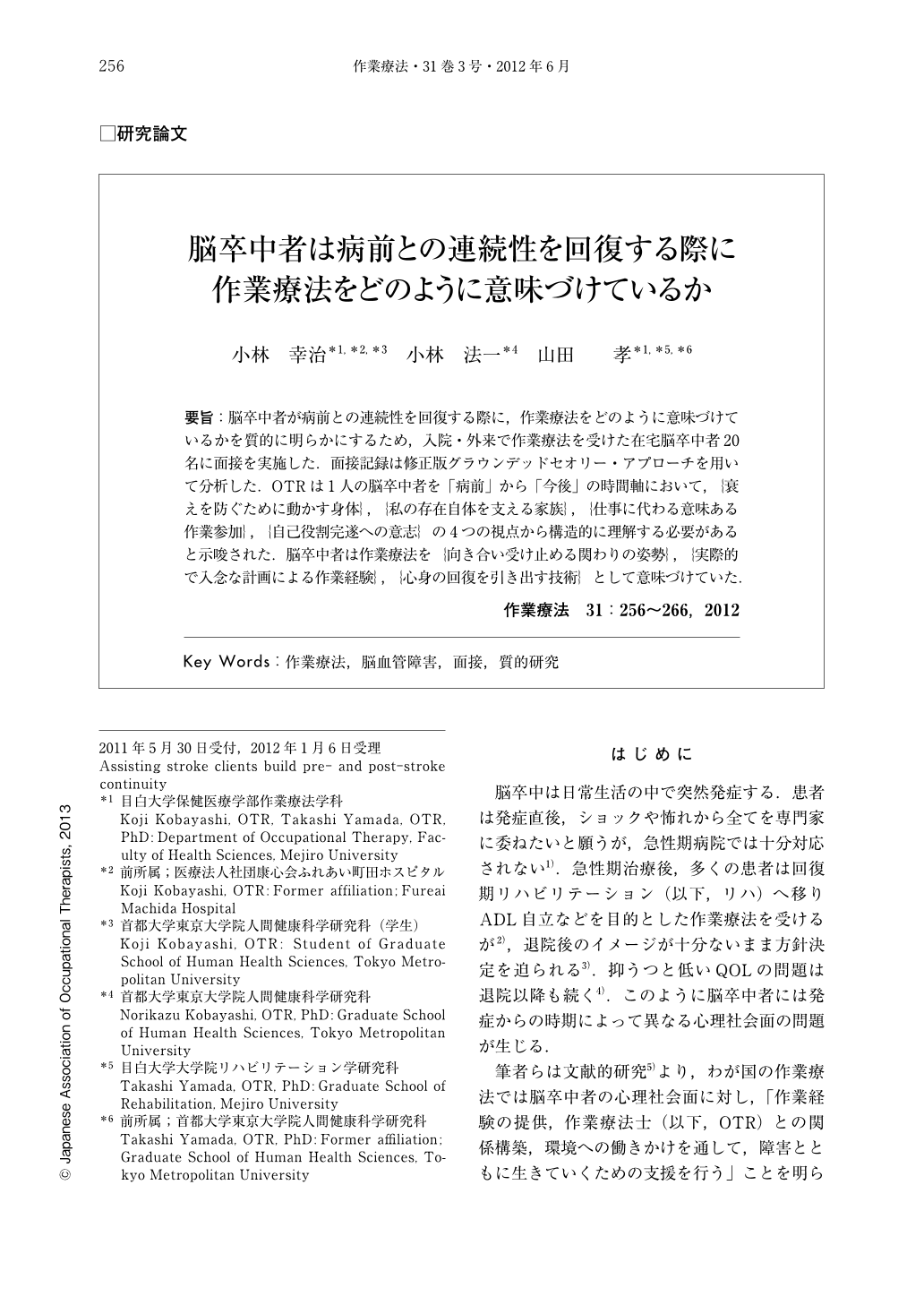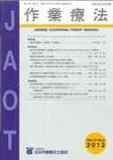Japanese
English
- 販売していません
- Abstract 文献概要
- 1ページ目 Look Inside
- 参考文献 Reference
- サイト内被引用 Cited by
要旨:脳卒中者が病前との連続性を回復する際に,作業療法をどのように意味づけているかを質的に明らかにするため,入院・外来で作業療法を受けた在宅脳卒中者20名に面接を実施した.面接記録は修正版グラウンデッドセオリー・アプローチを用いて分析した.OTRは1人の脳卒中者を「病前」から「今後」の時間軸において,{衰えを防ぐために動かす身体},{私の存在自体を支える家族},{仕事に代わる意味ある作業参加},{自己役割完遂への意志}の4つの視点から構造的に理解する必要があると示唆された.脳卒中者は作業療法を{向き合い受け止める関わりの姿勢},{実際的で入念な計画による作業経験},{心身の回復を引き出す技術}として意味づけていた.
The purpose of this study was to investigate how stroke clients build continuity from before to after strokes, and how these clients assess occupational therapy contribution to their lives. We interviewed 20 stroke clients living at home, and used the modified-grounded theory approach (M-GTA) to analyze the data. Results indicate that it is necessary for occupational therapists to understand the stroke clients from the perspective of continuity from their lives before the stroke to after the accident, including their ‘physical condition', ‘family relationships', ‘occupational engagement' and ‘will power'. Furthermore, occupational therapists need to include a ‘supportive attitude', ‘occupational experience' and ‘care for mind and body' in their therapy.

Copyright © 2012, Japanese Association of Occupational Therapists. All rights reserved.


